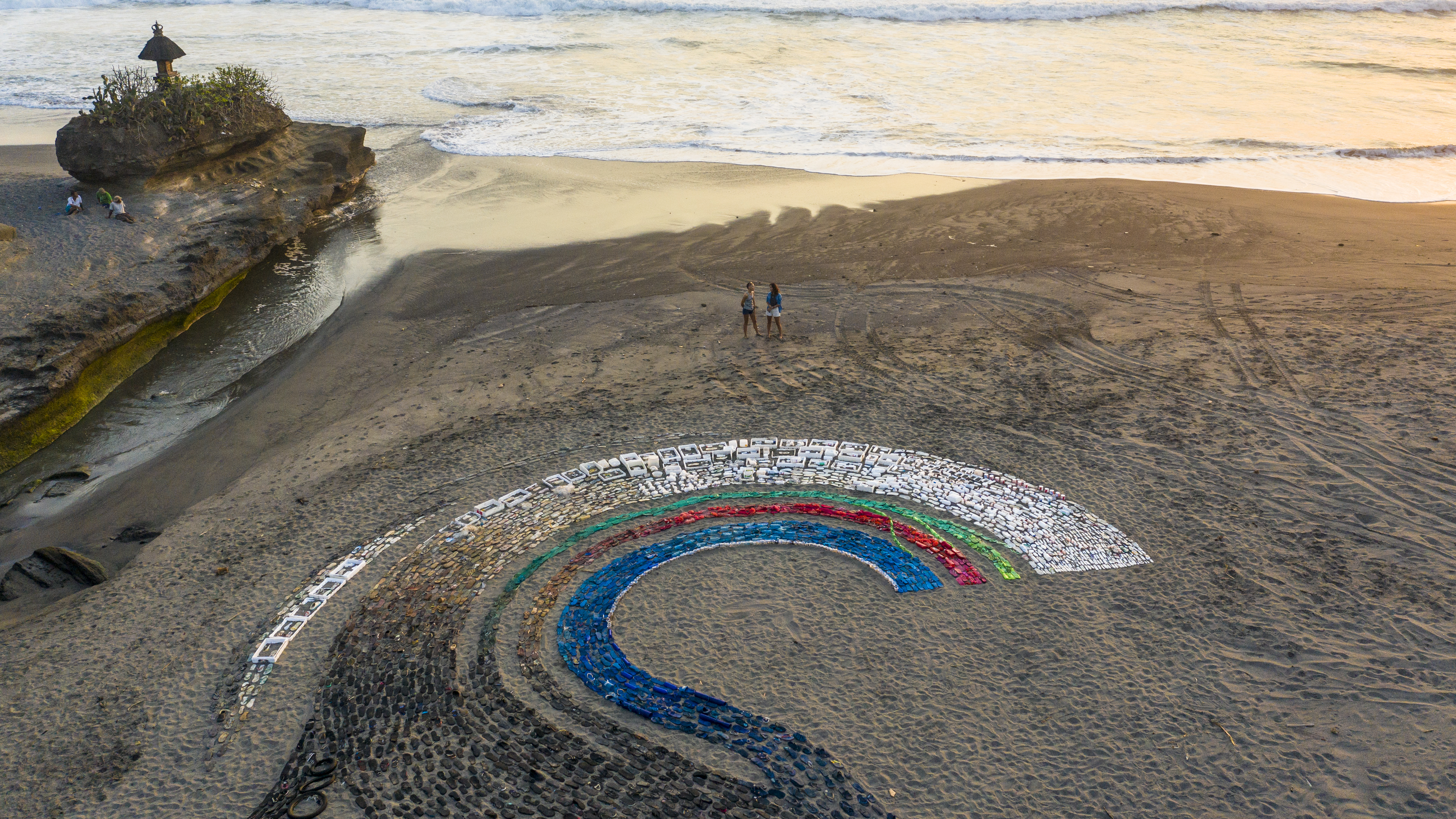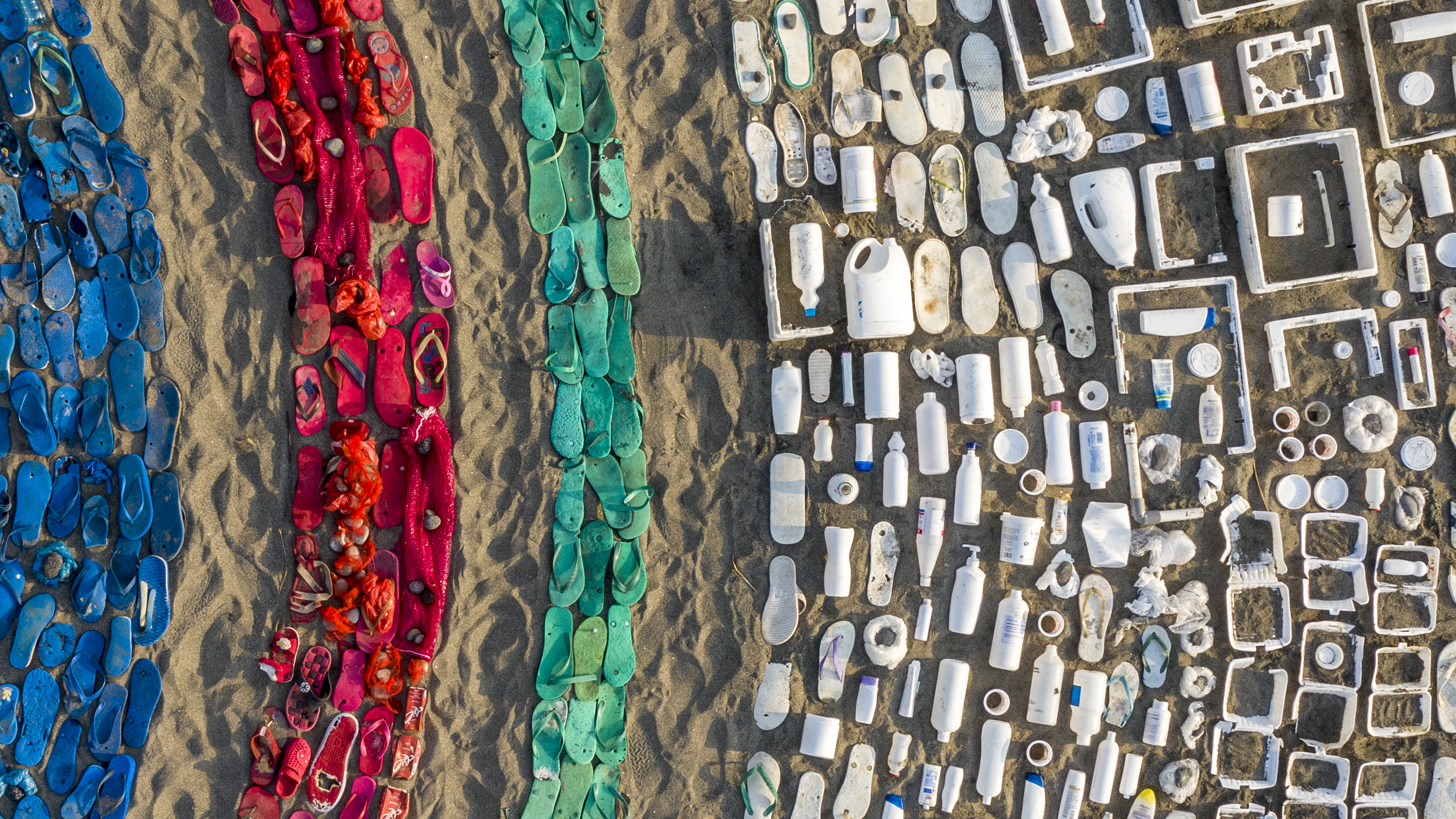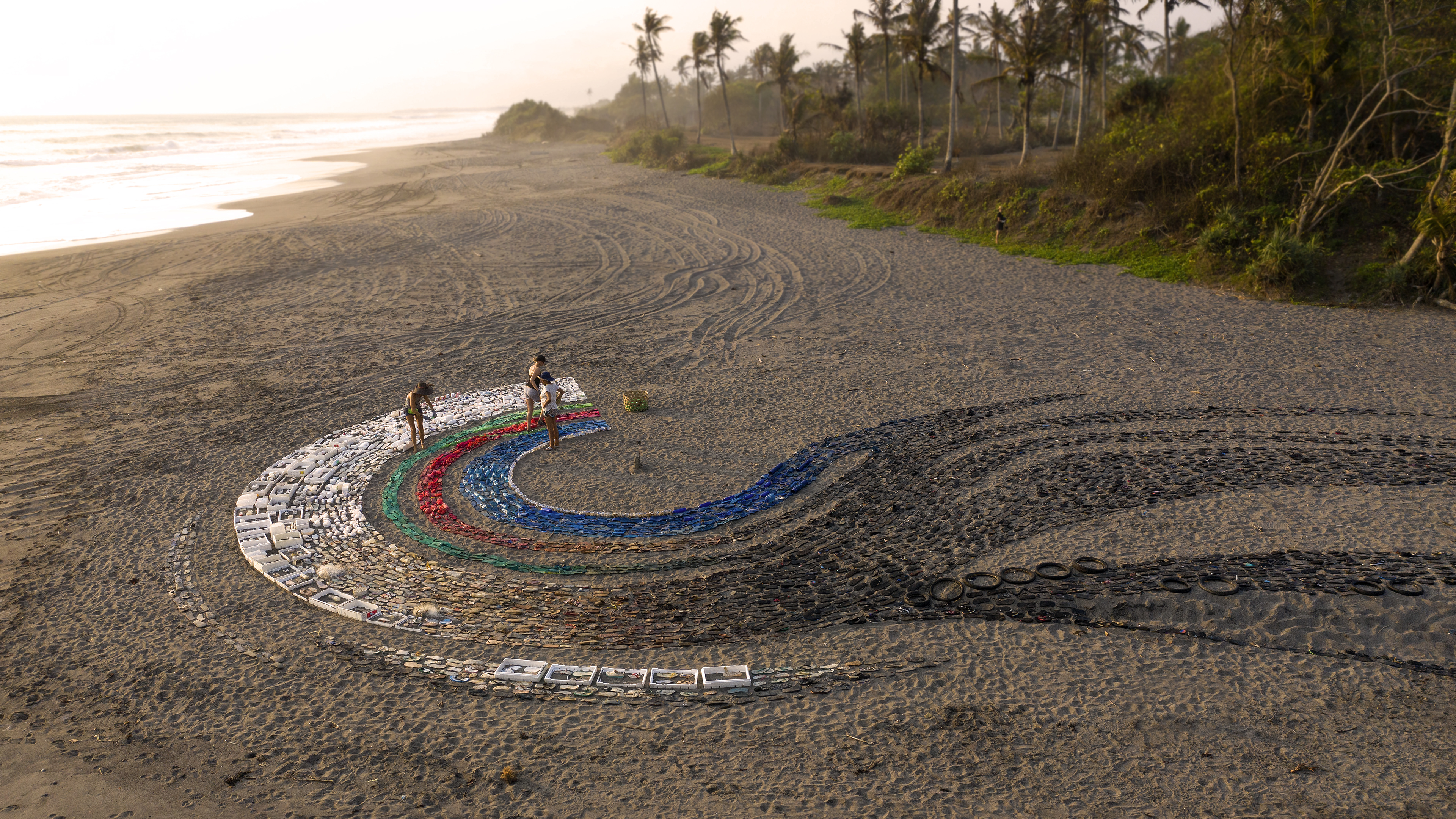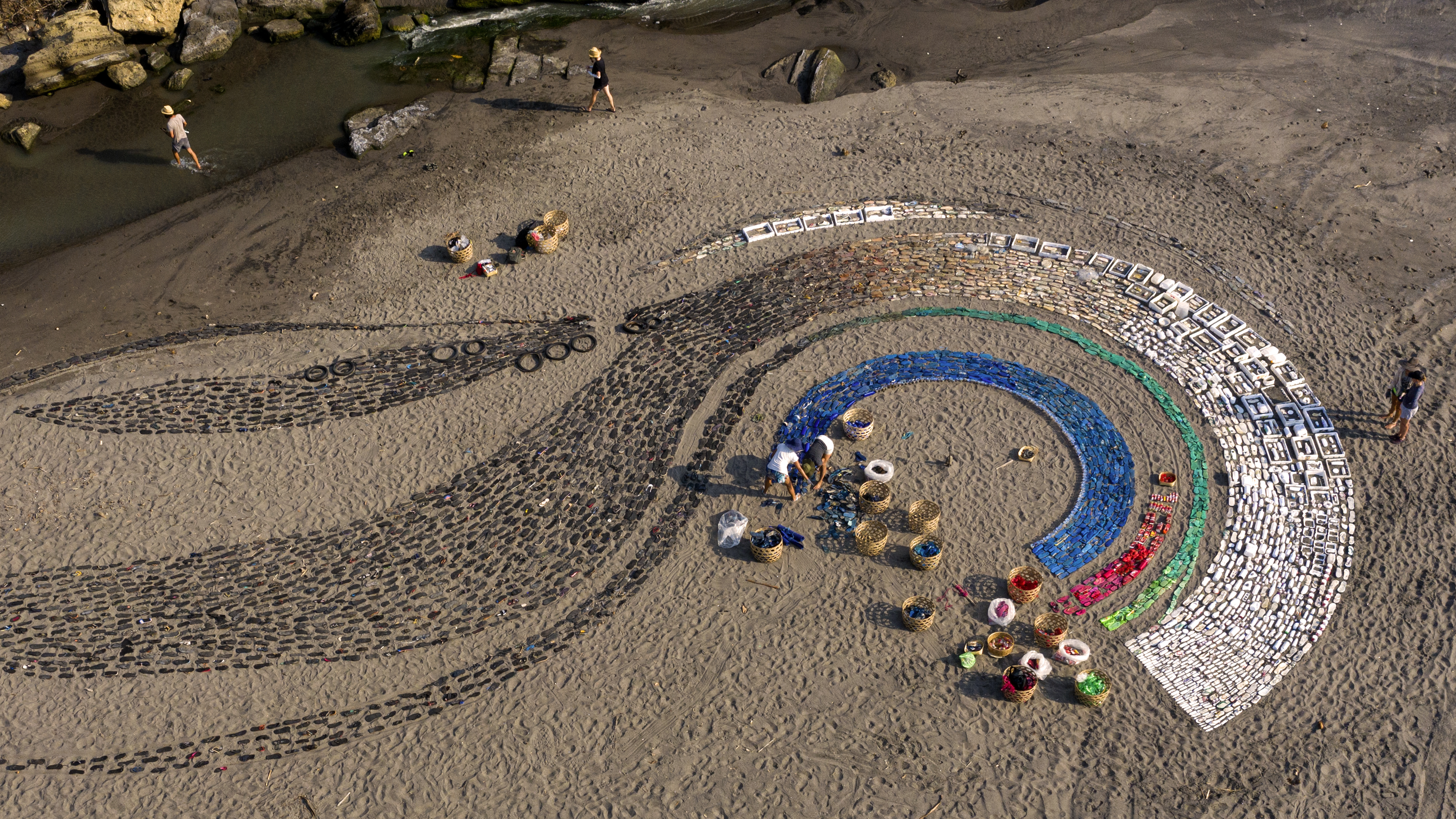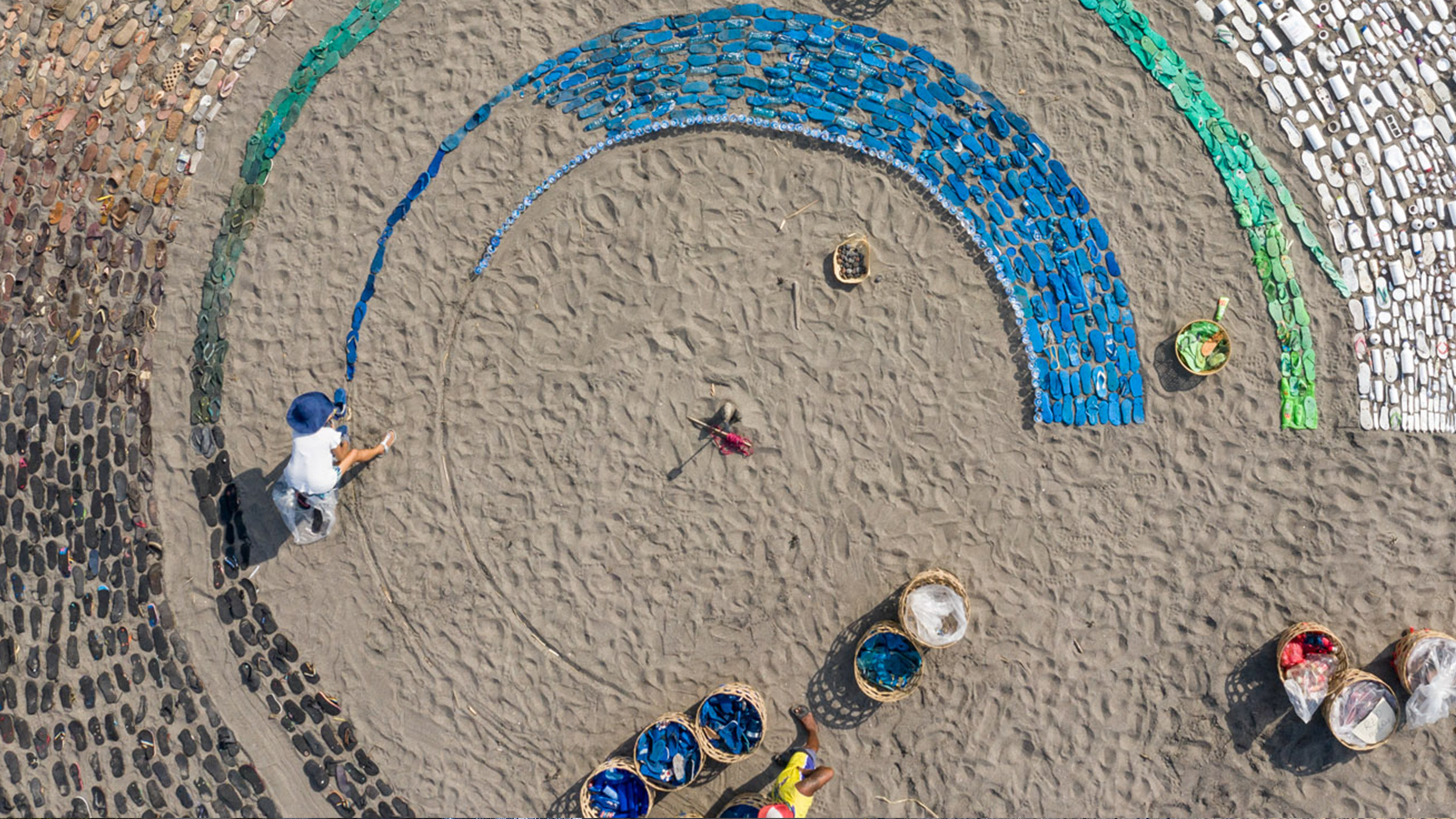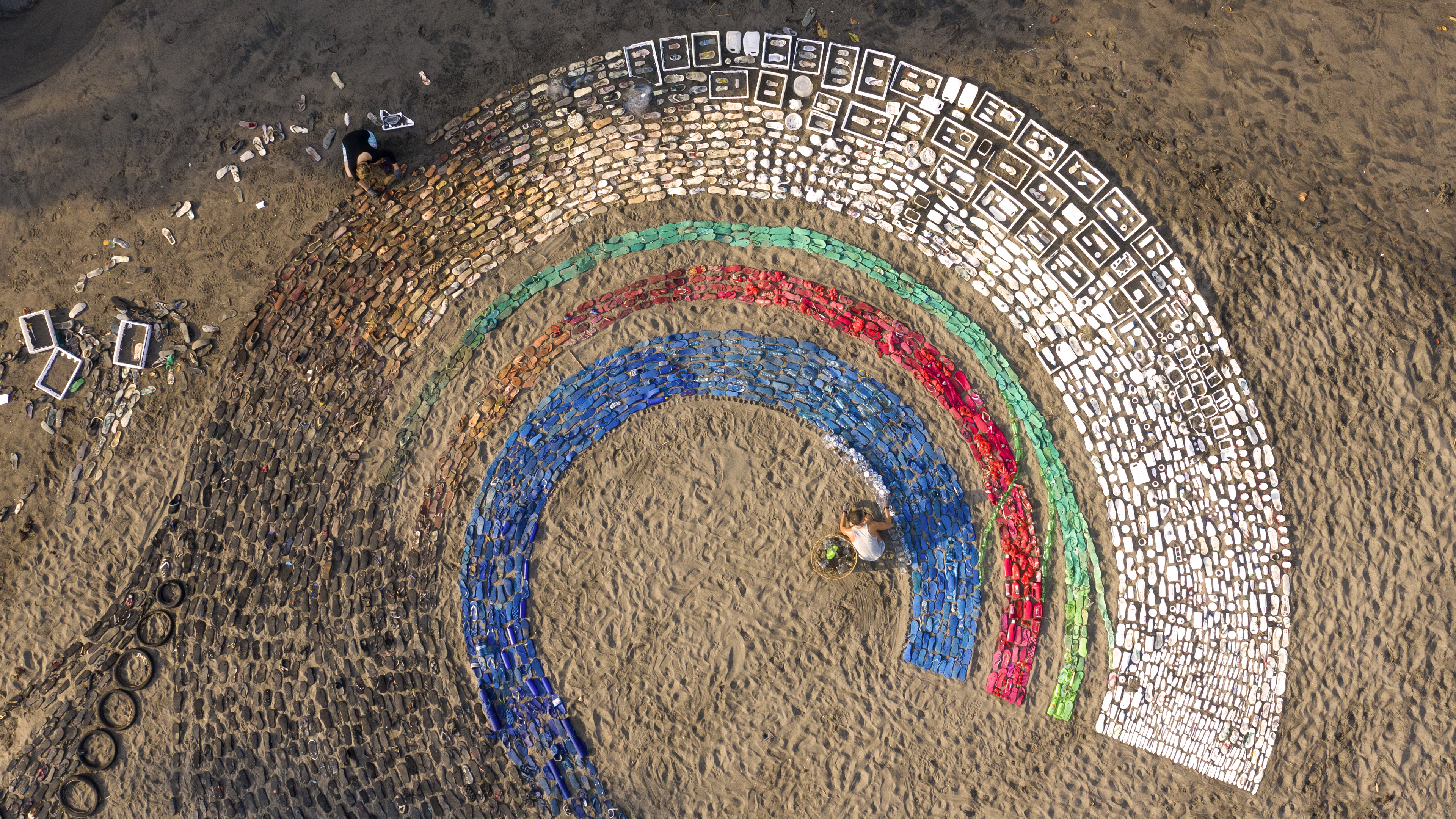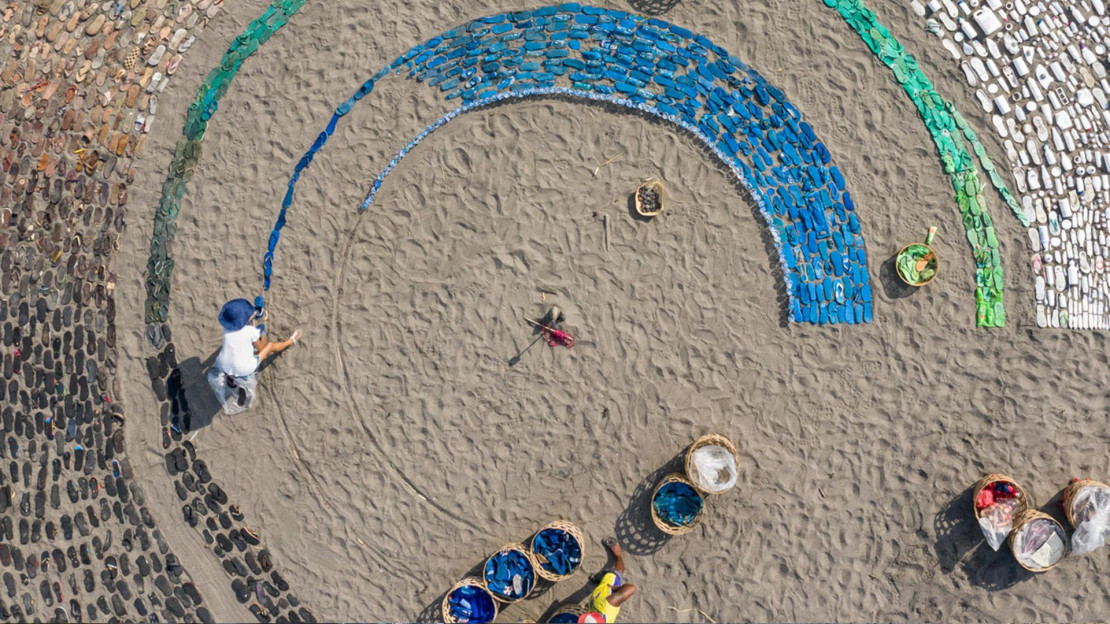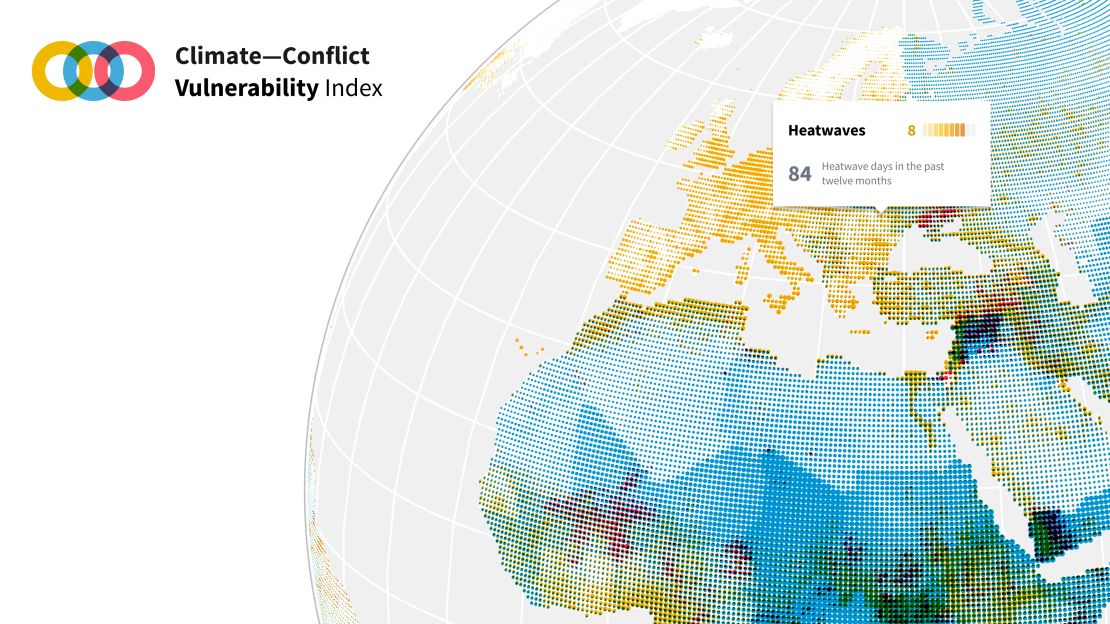Perpetual Plastic
Beach debris reveals the fate of all plastic
What is the fate of all plastic ever produced? This 14m diameter data art sculpture, made from beach debris, provides the answer.
Since the early 1950s, 8.3 billion metric tons of plastic have been produced for human consumption. To understand the environmental legacy of exponential plastic production, we visualized what happens to plastics after its first use.
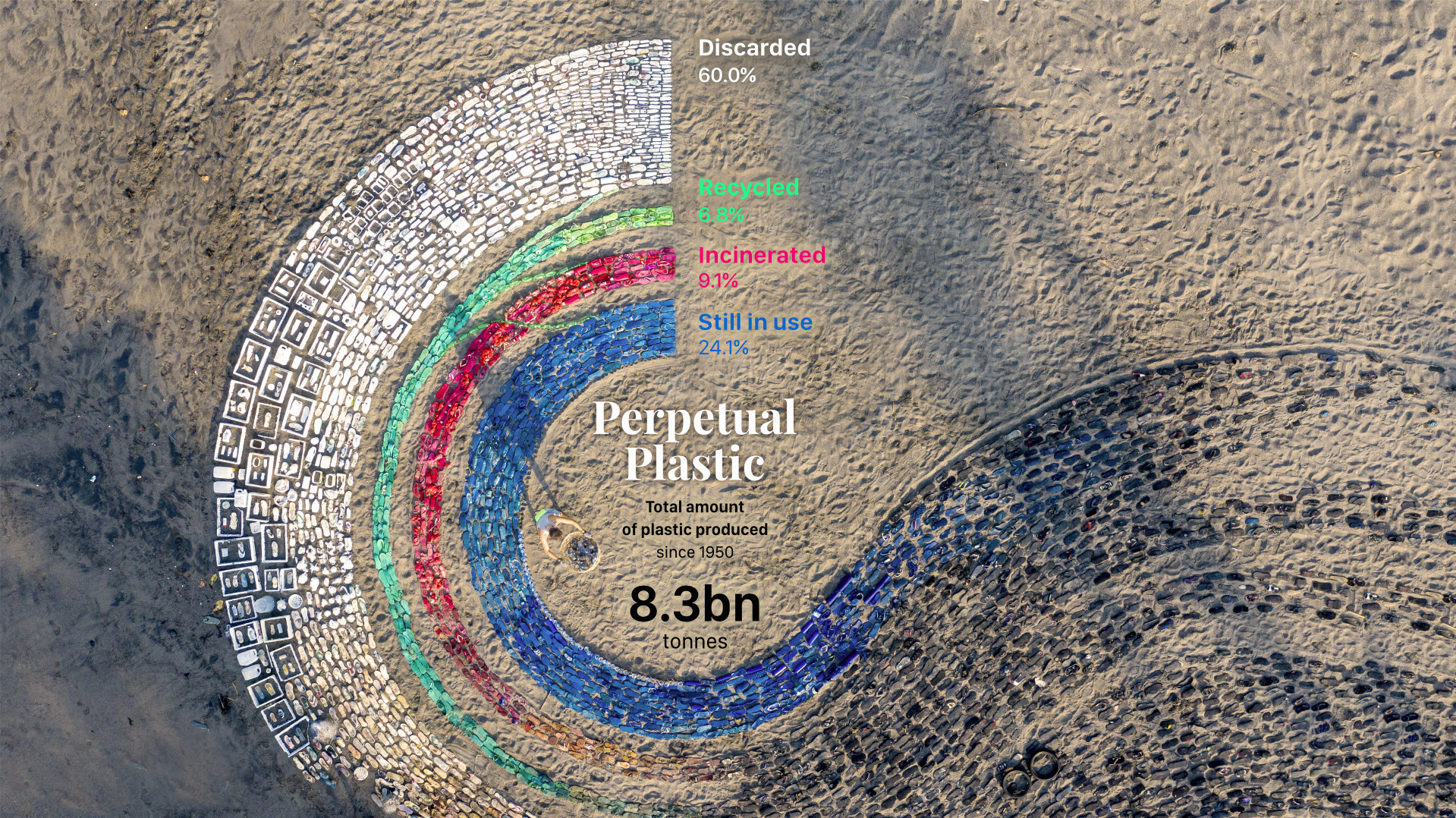
Installed on a beach in Bali with marine debris collected from nearby, this data artwork investigates our global plastic waste stream and emphasizes how mismanaged waste ends up in the ocean.
Our focus
Our project highlights the scope of the plastic problem (in terms of amount produced as well as its fate) and the transformation of plastic over its lifetime, using beach debris as a salient example. The situated, participatory data installation approach extends abstract displays of numbers towards a more gripping form of ‘data visceralization.’ The direct link to beach clean-up activities suggests immediate opportunities for action, turning the sculpture into a catalyst for engagement.

Data art installation
The 14m (46ft) diameter piece was assembled from 4760 pieces of plastic trash and took 12+ hours to install.
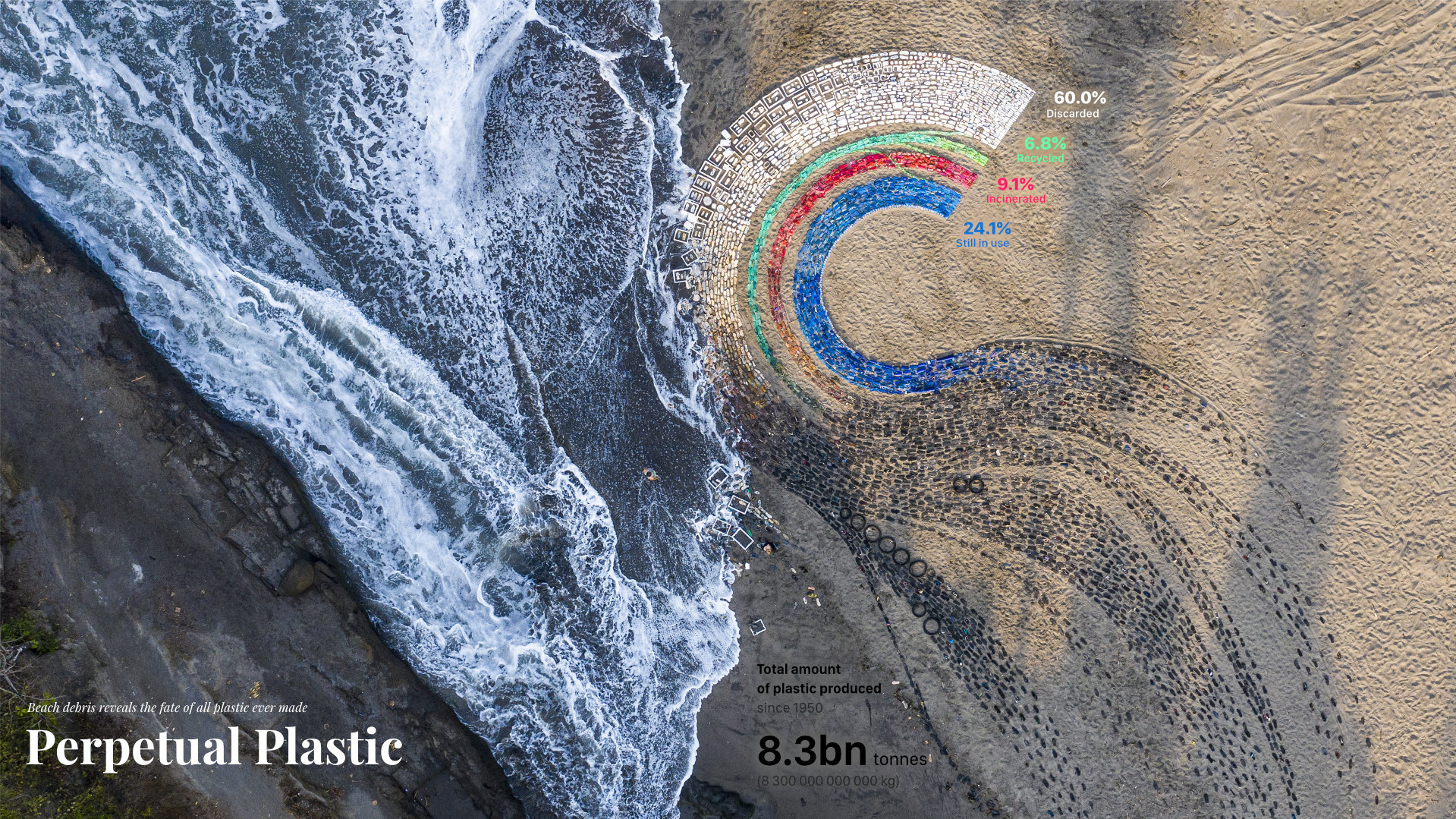
Visualization design
The statistics used originate from a widely cited scientific publication on the "Production, use, and fate of all plastics ever made". The publication featured a representation of the main statistics in form of a flow diagram. The data platform "Our World in Data" created a reworked Sankey diagram, which served as inspiration for our semi-radial redesign.

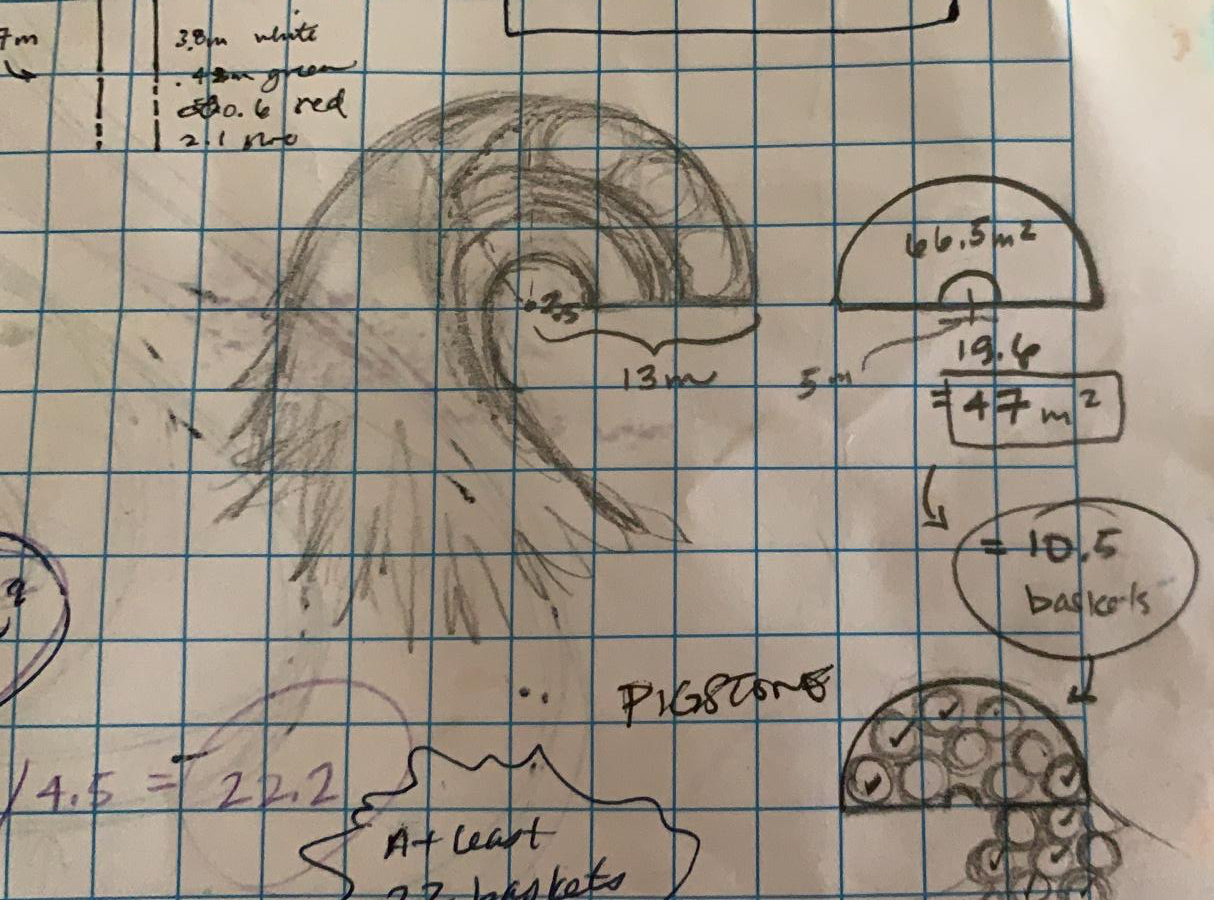
Learn more about the project at http://perpetual-plastic.net.

